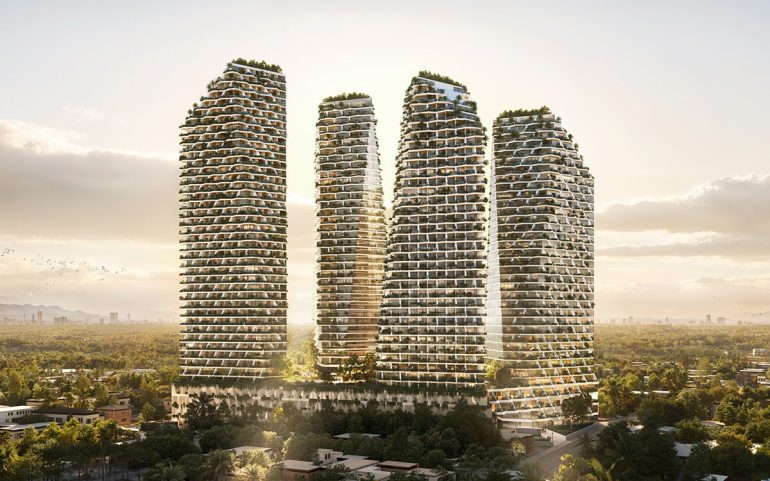Palmanova Center, a new 200,000 square-metre mixed-use complex, will reshape Asunción’s urban landscape starting this October. Positioned on the rapidly developing Primer Presidente Avenue in the Mbocayaty neighbourhood, the project will be a beacon of modern, sustainable architecture for Paraguay’s capital.
The new landmark development project will combine residential towers, corporate offices, a premium shopping centre, and high-end leisure facilities. The Palmanova Center construction begins in October 2025, and the project should be fully completed by December 2030.
Harmonising with Asunción’s tropical setting
The architect’s rendering is distinguished by its innovative integration of nature into the built environment. The visual is inspired by the region’s natural ravines, or cañadas. The development features a five-storey landscaped base, or “plinth,” that incorporates terraced walkways, gardens, and urban greenery. This “vertical ecology” aims to harmonise with Asunción’s lush tropical setting and improve the urban ecosystem.
Palmanova Center features passive design elements and cutting-edge technology to reduce its ecological footprint. The project includes a high-performance façade with double-glazed windows that reflect 40% of solar radiation.
Palmanova Center: A city within a city
The development of the Palmanova Center’s four towers is arranged around residential living, corporate prestige, and retail and leisure hub. It will also offer a suite of luxury amenities. They plan to have Asunción’s highest rooftop with double infinity pools, a panoramic terrace, and a restaurant. Other facilities will include a state-of-the-art gym and a wellness area. The project will also have co-working spaces and a convention centre.
International Architecture & Design Awards
Palmanova Center’s visionary design has already received global acclaim for its sustainable mixed-use design. In 2025, the project was recognised as a Gold Winner at the International Architecture & Design Awards (IADA). This mixed-use development was chosen among 500 proposals coming from 40 different countries.
Read more: Why Building This Way? A reflection On Paraguayan Architecture.


